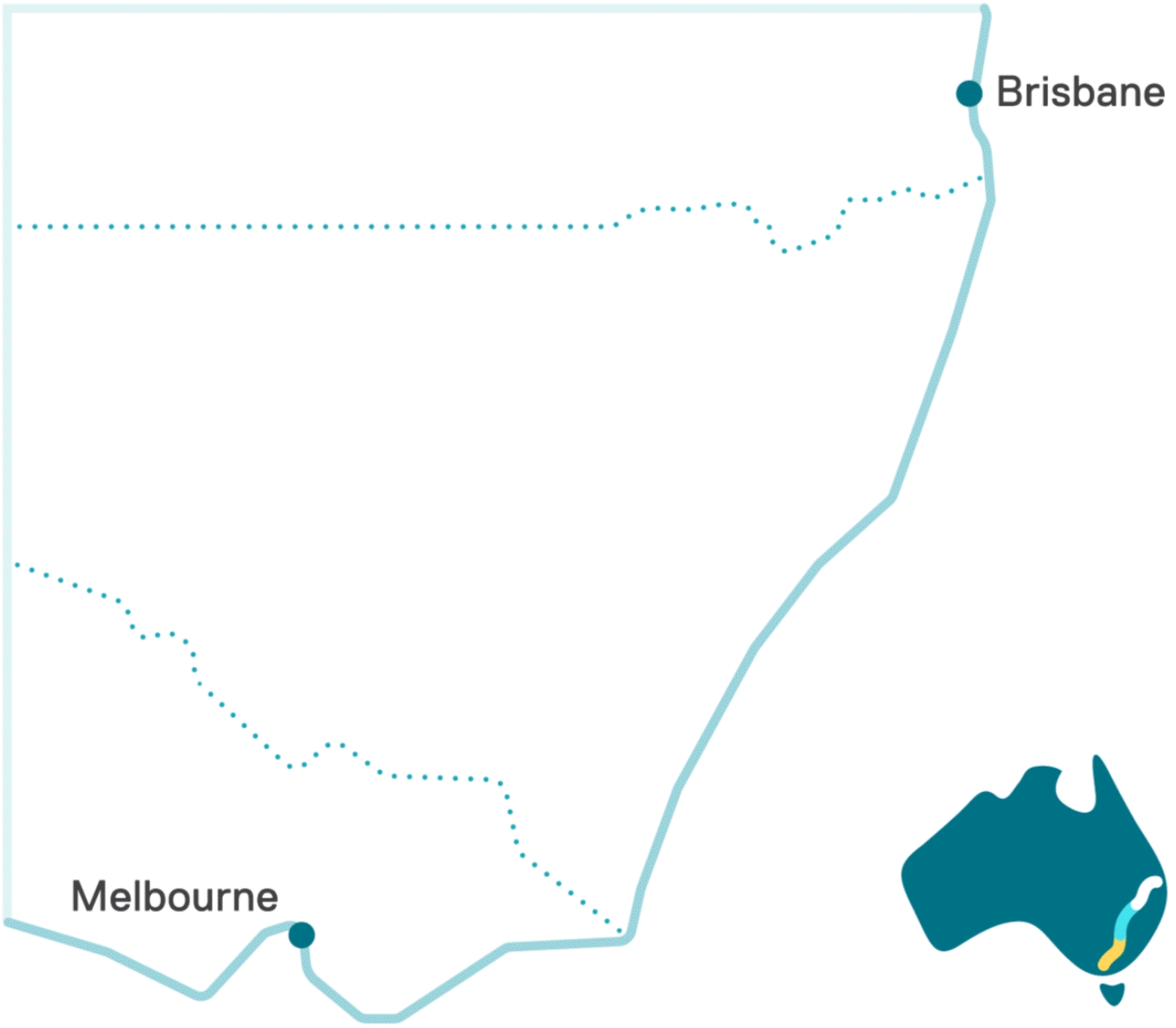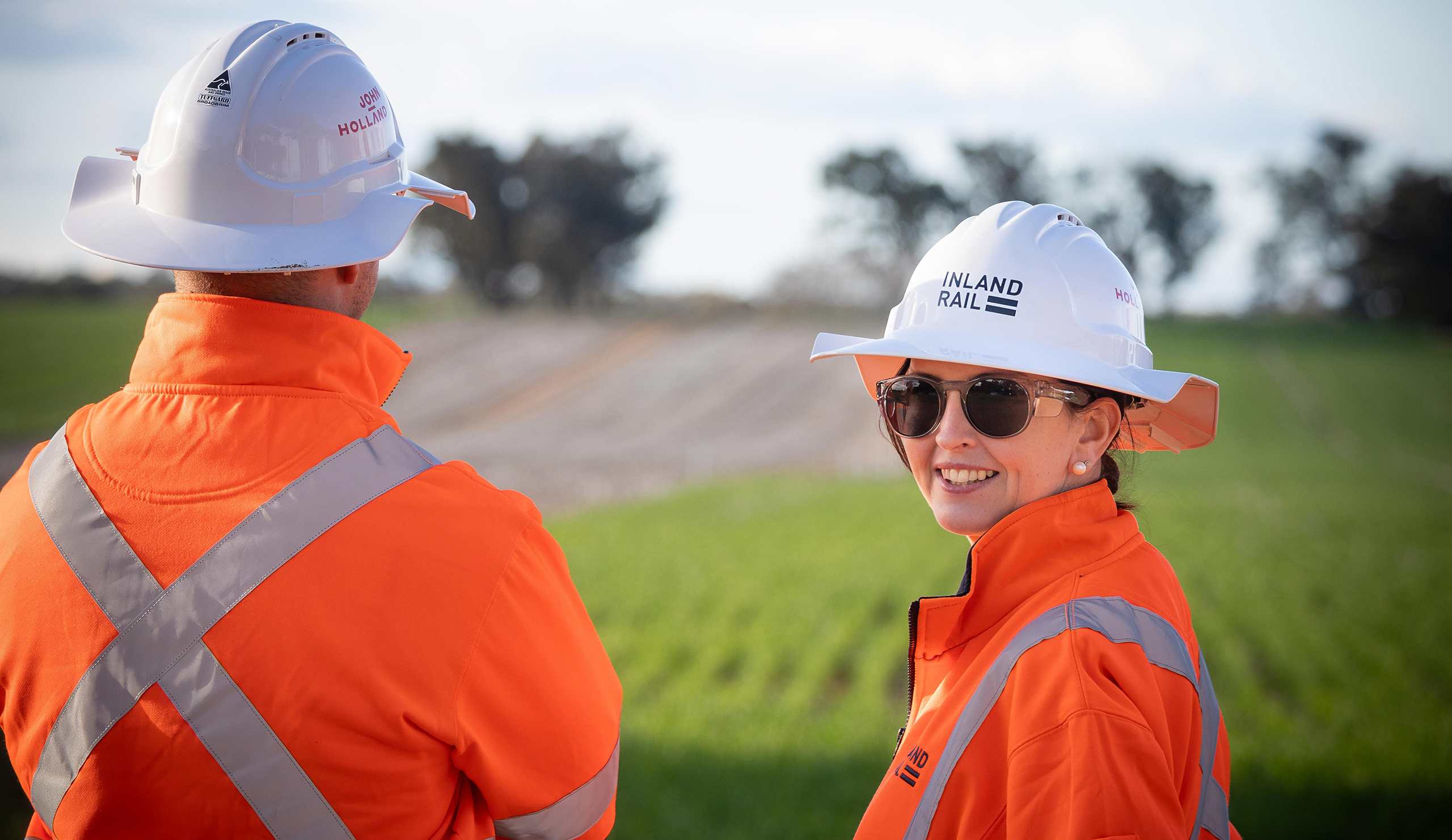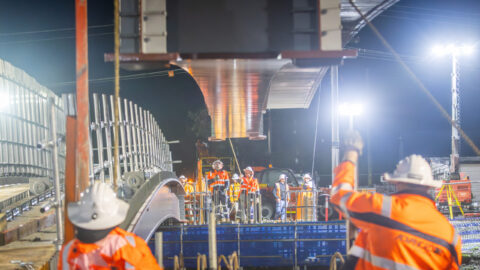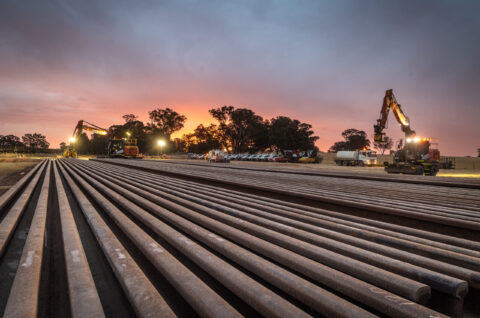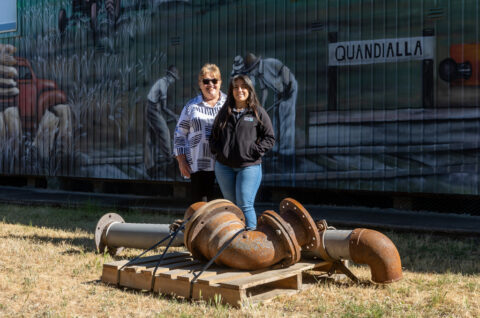Inland Rail involves enhancing approximately 1,000km of existing railway track and constructing 600km of new track passing through regional Victoria, New South Wales and Queensland.
The sections of Inland Rail between Beveridge in Victoria and Parkes in New South Wales are prioritised for completion in 2027.
What is the purpose of Inland Rail?
Inland Rail is an important project to meet Australia’s growing freight task, improve road safety and help decarbonise our economy.
Inland Rail will enhance our national freight and supply chain capabilities, connecting existing freight routes and supporting Australia’s growth.
As each of its 12 sections are completed, Inland Rail will better link businesses, manufacturers and producers to national and global markets and generate opportunities for industries and regions during construction and beyond.
Delivering Inland Rail will help shift more everyday goods onto rail, meaning faster, more resilient freight; safer, less congested roads; and fewer emissions.
Who is building Inland Rail?
Inland Rail Pty Ltd, a subsidiary of Australian Rail Track Corporation (ARTC), is building Inland Rail on behalf of the Australian Government.
Work on Australia’s largest freight rail infrastructure project is well underway, and we’re partnering with regional businesses and communities to make it happen.
As each section of Inland Rail is completed, it will be operated and managed by ARTC.
What is the status of the Inland Rail project?
Construction of Inland Rail is well underway in regional Victoria and New South Wales.
To manage the enormous scale of what is the largest infrastructure project in Australia, we are taking a staged approach to deliver Inland Rail. The route comprises 12 sections (listed below), all of which are in various stages of planning, approvals and construction. More than 430km of the line has been upgraded (as of September 2025).
What are the Inland Rail Sections?
There are 12 Inland Rail sections across three Australian states. Click on the state name to find out more.
Construction is underway in Victoria, and is prioritised for completion by the end of 2027. Subscribe for updates.
Beveridge to Albury
Comprises 262km of existing track.
This section will be enhanced to increase height and width clearances to allow for double-stacked trains.
In New South Wales, the section from Parkes to Narromine is operational and major construction on the Narrabri to North Star Phase 1 section is completed. The NSW project areas south of Parkes are prioritised for completion by the end of 2027. Subscribe for updates.
North Star to NSW/Qld Border
Comprises 5km of new track and 25km of existing track.
This section will complete one of the key missing rail links between New South Wales and Queensland, using the non-operational rail corridor or new track to connect to the operating line running to Yelarbon.
Narrabri to North Star
Comprises 184km of upgraded track and 2km of new track.
This section is divided into Phase 1 and Phase 2. Major construction on Phase 1 is complete. Phase 2 is in the environmental approvals phase.
Narromine to Narrabri
Comprises 306km of new rail corridor and track.
This new section will reduce the overall journey time and complete one of the missing rail links between Melbourne, Adelaide, Perth and Brisbane.
Parkes to Narromine
Comprises 98km of existing track and 5km of new track.
This was the first section of Inland Rail to be completed and is operational with double-stacked trains.
Stockinbingal to Parkes
Comprises 170km of existing track.
Inland Rail will benefit from the track upgrades ARTC has already completed to this section. Enhancement works will be undertaken to allow for double-stacked trains and a new crossing loop built to increase capacity on the line.
Illabo to Stockinbingal
Comprises 37km of new track and 2km of upgraded track.
The route bypasses the winding section of track called the Bethungra Spiral.
Albury to Illabo
Comprises 185km of existing track.
Inland Rail will benefit from the track upgrades ARTC has already completed to this section. Enhancements or modification works will be undertaken at various locations including Junee, Wagga Wagga and Albury to allow for safe clearance of double-stacked freight trains.
Planning, approval and pre-construction work is ongoing for sections in Queensland. Subscribe for updates.
Calvert to Kagaru
Comprises 53km of new dual gauge track within existing rail corridor.
This section includes 39km of dual-gauge track allowing single-stacked operations between a proposed terminal at Ebenezer and Kagaru.
Using 1.1km of tunnelling, this section will connect Inland Rail with the existing Sydney to Brisbane coastal line and the Port of Brisbane.
Helidon to Calvert
Comprises 28km of new dual gauge track.
This section will cross the Lockyer Valley floodplain and the Little Liverpool Range with an 850m tunnel.
Gowrie to Helidon
Comprises 28km of new dual gauge track.
This section will traverse the steep terrain of the Toowoomba Range and will include a 6.2km tunnel.
NSW/Qld Border to Gowrie
Comprises 217km of dedicated single track featuring approximately 149km of new rail corridor and 68km of existing open access rail corridor.
Did you know?
10 key Inland Rail facts
1.
Spanning more than 1,600km, Inland Rail is the largest freight rail project in Australia and one of the most significant rail infrastructure projects in the world.
2.
It comprises 12 sections across 30 local government areas: one section in Victoria, seven in New South Wales, and four in Queensland.
3.
Inland Rail will upgrade 1,000km of existing rail line and build 600km of new track to connect Melbourne and Brisbane via regional Victoria, New South Wales and Queensland.
4.
Inland Rail will reduce traffic congestion by taking tens of thousands of large trucks off our roads each year.
5.
Inland Rail will cut rail freight travel time between Melbourne and Brisbane by almost a third – down from 33 hours to less than 24 hours – making it competitive with road.
6.
Did you know that 1,600km of Inland Rail is longer than the entire length of England and Scotland combined (1,400km)?
7.
Inland Rail will provide a consistent standard gauge connection from Melbourne to Brisbane as well as a dual gauge connection in Queensland, to allow seamless connectivity with Queensland’s narrow-gauge network.
8.
Almost 70% of freight carried on Inland Rail will be for domestic use – that includes household goods and food.
9.
Inland Rail will allow for the transit of greater freight volumes, with each 1.8km-long train capable of carrying up to the equivalent of 110 B-double trucks.
10.
Once each section of Inland Rail is completed it becomes part of ARTC’s freight rail network and enhances Australia’s supply chain. The completed North-West Connection at Parkes in New South Wales has reduced the rail distance between Brisbane and Perth and Brisbane and Adelaide by 500km, ensuring more efficient rail freight connectivity across Australia.
Inland Rail frequently asked questions
Yes, Inland Rail is still going ahead.
Construction is well underway on different sections of the 1,600km track.
Construction of sections south of Parkes in New South Wales and in Victoria is on track for completion in 2027.
Some sections of Inland Rail are already completed and operational.
Learn more about how Inland Rail will be used.
More than 430km of track has been upgraded (as of September 2025) and four sites in Victoria (including Wangaratta Station precinct and Glenrowan) are complete and operational.
As Inland Rail is such a large project – stretching 1,600km across three states – construction is divided into 12 sections, with a focus on completing the sections between Parkes, NSW and Beveridge, Victoria in 2027.
All sections are in various stages of construction or environmental approval. When a section is completed, it is handed over to ARTC, the operator of the line, to enable freight companies to use it.
The purpose of Inland Rail is to carry freight trains on an inland route through between Melbourne and Brisbane.
Inland Rail is designed to enhance and improve the resilience of our national freight and supply chain, by connecting existing freight routes through rail, roads and ports.
Inland Rail means more everyday goods and other commodities can be transported faster and more efficiently across Australia and beyond to global markets. It also means safer, less congested roads and fewer carbon emissions.
Inland Rail will provide a consistent standard gauge connection from Melbourne to Brisbane as well as a dual gauge connection in Queensland to allow seamless connectivity with Queensland’s narrow-gauge network.
Read more about the benefits of Inland Rail.
The Australian Government is providing funding for the construction of Inland Rail.
Inland Rail Pty Ltd, a subsidiary of Australian Rail Track Corporation (ARTC) is building Inland Rail, on behalf of the Australian Government.
ARTC operates and maintains the nation’s freight network on behalf of the Australian Government.
When a section of the Inland Rail line is finished, Inland Rail Pty Ltd ‘commissions’ (hands over) that section to ARTC so it can be used by freight operators.
Inland Rail will support double-stacked freight trains between an intermodal freight terminal at Beveridge, Victoria, about 50km north of Melbourne, and a proposed intermodal terminal at Ebenezer, Queensland, about 60km south-east of Brisbane.
Single-stacked trains will be able to pass through Ebenezer to Kagaru to connect with the existing Sydney to Brisbane coastal line.
Inland Rail will carry freight trains, some of which will be ‘double stacked’ – where two layers of intermodal containers are carried by one railway car.
About 70% of freight carried by trains on the Inland Rail line will be for domestic use, such as household goods and food. It’s designed to traverse the major food and agriculture-producing areas of three states, helping to distribute these vital goods to capital city and export markets in an efficient way.
Yes, Inland Rail is the largest single rail project in Australia.
The route stretches 1,600km from Beveridge in Victoria, to Kagaru, in Queensland. A project this big will take many years to complete, so the work is divided into 12 sections.
The decision to run passenger services on the Inland Rail line is a matter for each State Government along the alignment, or for private operators, to determine in the future.
Inland Rail Pty Ltd has been commissioned by the Australian Government to design and construct Inland Rail primarily for double-stacked freight trains. These trains will be able to carry very large volumes of goods between intermodal terminals near Melbourne and Brisbane and will also pick up and deliver freight to communities along its route.
Learn more about how Inland Rail will be used.
